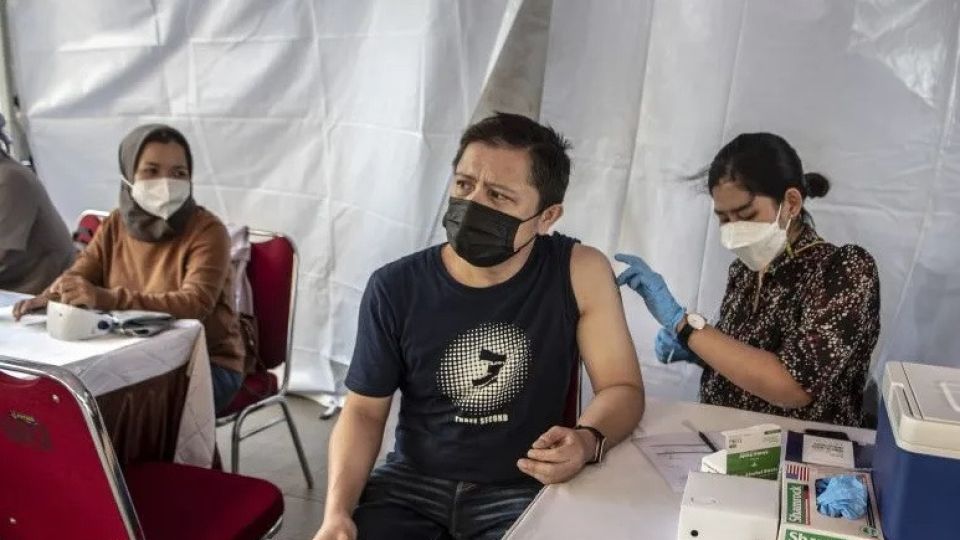August 30, 2022
JAKARTA – Indonesia has almost finished the last round of clinical trials for the two long-awaited locally produced COVID-19 vaccines.
But the future remains unclear whether the public could use them for much-needed booster doses with the government slashing the national economic recovery (PEN) budget for the pandemic response next year and possibly cutting the funding for further research.
A research team from Airlangga University in East Java, in cooperation with local firm Biotis Pharmaceuticals Indonesia, has recently finished injecting some 4,000 volunteers aged 18 and above with the second dose of the homegrown vaccine candidate, as part of the third stage of clinical trials. The vaccine is named Merah Putih – after the color of Indonesia’s red-and-white flag.
The team said so far, volunteers had not experienced severe adverse effects from the vaccine, which was developed using inactivated coronavirus.
The team is expecting to apply for Emergency Use Authorization (EUA) for the vaccine as primary doses with the Food and Drug Monitoring Agency (BPOM) sometime next month after they collect immunogenicity data from the volunteers.
“In around four weeks we will conduct blood tests on the volunteers to see the vaccine immunogenicity. We can request an EUA from the BPOM once the immunogenicity data is available,” researcher Dominicus Husada told The Jakarta Post on Wednesday. “The manufacturing process for the vaccine can start as soon as the BPOM grants us the EUA.”
Without revealing a specific timeline, professor Ni Nyoman Tri Puspaningsih, coordinator for COVID-19 products research at Airlangga University, said that Biotis was capable of producing around 20 million doses of the Merah Putih vaccine.
Need for self-sufficiency
Despite the Merah Putih vaccine being designated for primary vaccination in adults, Dominicus said the Health Ministry had requested it to be mainly used as boosters for adults – and as primary and booster doses for children. This is because the entire adult population is projected to be already fully vaccinated by the time the vaccine is ready to be mass-produced.
As of Monday, some 72 percent of Indonesia’s 234 targeted population had received the second dose. Despite this, Indonesia still has quite a large need for COVID-19 vaccines as only around 29 percent of the country’s population of 208 million over the age of 18 has received a third dose.
Not to mention that the government has recently begun offering a fourth dose of vaccine to the country’s 1.5 million health workers to provide additional protection against Omicron subvariants that have been responsible for driving up daily caseloads of late. Only 19 percent of these workers have received the second booster so far. The government is also planning to expand the eligibility to vulnerable groups. It is also seeking to give a booster dose to 53 million children aged 6-18, who, despite being eligible for primary vaccines, are not yet permitted to receive the third dose.
While the Merah Putih vaccine research is on course for adult primary doses, further research is needed to assess the safety of the vaccine for booster shots in adults and children.
Dominicus said researchers would need another six months to conduct a series of clinical trials for the first and second booster doses. He was concerned that such research would not be funded by the government next year when it will stop allocating funds for pandemic recovery.
“If the BPOM permits us to conduct research for boosters and pediatric vaccination, we’ll try to finish it within this year, or at least we can provide interim data of the study before the end of the year,” he said.
Fate of the Indovac vaccine
Since the early days of the pandemic, the government has been aiming to develop its own COVID-19 vaccines, following difficulties in procuring vaccines from abroad for its huge population.
But uncertainty also marks the future development of another local vaccine candidate – the Indovac vaccine – that was started in June of last year by state-run pharmaceutical firm Bio Farma in cooperation with Baylor College of Medicine in Texas, the United States.
Bio Farma has submitted the interim results from the last stage of clinical testing in humans for the vaccine, which was previously called the State-owned Enterprises (BUMN) vaccine, and is currently awaiting the EUA from the BPOM.
Bio Farma president director Honesti Basyir told the Post on Friday that the vaccine would be mainly used as a primary dose for adults, while the company is considering running trials for adult boosters and primary doses for children.
He said the company would self-finance all stages of Indovac vaccine development next year, “from research, trials to production.”
The company is expected to manufacture around 20 million doses each year.
Health Minister Budi Gunadi Sadikin has said that the government had allocated Rp 1.3 trillion (US$87.34 million) for procuring various brands of COVID-19 vaccines this year, a large part of the budget would be set aside for the manufacturing of locally made vaccines.


